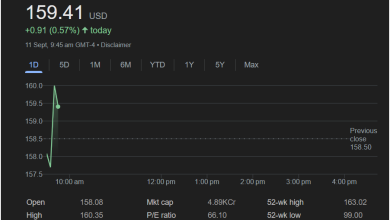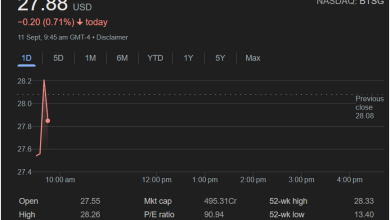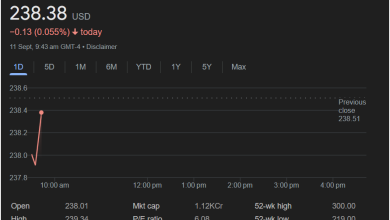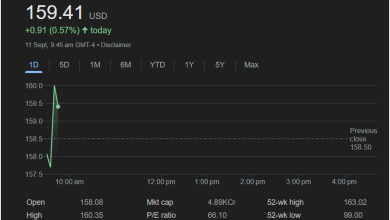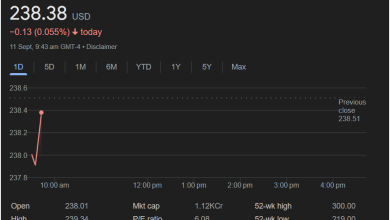Salesforce Stock Rises on Investor Confidence in AI Strategy and Profitability Push
The cloud software giant closed up nearly 1%, demonstrating resilience after an early dip. A premium valuation reflects high expectations for its AI-powered 'Einstein' platform, while a new dividend signals a maturing financial strategy

August 23, 2025
(SAN FRANCISCO, CA) – Shares of Salesforce, Inc. (NYSE: CRM) posted a solid gain in a volatile trading session yesterday, closing up 0.98%. The enterprise software leader finished the day at
2.41, as investors demonstrated their confidence in the company’s long-term growth trajectory, particularly its heavy investment in artificial intelligence.
The August 22nd trading session saw the stock rebound impressively from an early morning low, highlighting strong underlying support. The positive momentum continued in after-hours trading, with the stock adding another $0.51 (0.21%) to reach $248.80. This performance comes as the market continues to weigh Salesforce’s premium valuation against its dominant market position and its strategic pivot towards balancing high growth with increased profitability.
The day’s activity suggests that investors are increasingly buying into the narrative that Salesforce’s integration of generative AI across its product suite will unlock a new wave of enterprise spending, justifying its growth-oriented valuation. This article will provide an in-depth look at yesterday’s trading dynamics, analyze the key catalysts driving the stock, and break down the financial metrics that define the Salesforce investment case today.
Part 1: A Day of Resilience – Dissecting the Trading Action
The intraday chart for Salesforce tells a story of a shaky start followed by a confident recovery, a pattern that often signals strong conviction from dip-buyers.
-
Opening Dip: The stock opened at $245.78, slightly below the previous day’s close of
244.11** in the first few minutes of trading.
-
A Powerful Reversal: This early weakness was short-lived. A strong wave of buying entered the market, driving a sharp rally that pushed the stock to its intraday high of $249.53 before mid-morning. This represented a swift move of over $5 from its low.
-
Midday Consolidation: Following the morning peak, the stock entered a period of consolidation, giving back some gains but establishing a new, higher support level around the $247 mark.
-
Strong Close: In the final hours of trading, the stock trended steadily upward, closing near the top of its afternoon range at $248.29. This finish, well above the day’s midpoint, indicates that buyers had the upper hand as the session concluded.
This V-shaped recovery from the opening low is a bullish signal, suggesting that institutional investors and traders view any price weakness as an opportunity to accumulate shares in the cloud computing giant.
Part 2: The Core Thesis – AI, Profitability, and the Salesforce Ecosystem
Salesforce’s stock performance is being driven by more than just daily market sentiment. It’s rooted in a fundamental transformation of its business strategy.
-
The AI Imperative (Einstein 1 Platform): The single biggest catalyst for Salesforce is its aggressive push into artificial intelligence. The company has integrated its AI capabilities, branded as the Einstein 1 Platform, directly into its core Customer 360 portfolio. This isn’t just a bolt-on feature; it’s a fundamental re-architecture designed to help its clients use their own proprietary data to power predictive and generative AI. This focus on trusted, company-specific AI is a major differentiator in an increasingly crowded market and is seen as the key driver for future revenue growth.
-
The New Focus on Profitable Growth: For years, Salesforce was the epitome of “growth at all costs.” More recently, under pressure from activist investors and a changing market environment, the company has made a significant pivot towards profitable growth. This involves a disciplined approach to spending, a focus on margin expansion, and a commitment to returning capital to shareholders.
-
A Sign of Maturity: The Dividend: A key signal of this new era is the initiation of a dividend. While the current dividend yield of 0.67% (based on a quarterly payout of $0.42) is modest, its existence is symbolically important. It signifies that Salesforce has matured into a company that can both invest heavily in future growth (like AI) and reward its long-term shareholders with direct cash returns.
Part 3: Understanding the Metrics – A Premium for a Market Leader
The financial data for Salesforce reveals a company that the market holds in high regard, assigning it a premium valuation based on future expectations.
-
Price-to-Earnings (P/E) Ratio: At 38.80, Salesforce’s P/E ratio is characteristic of a high-growth technology company. It indicates that investors are willing to pay a premium for its shares in anticipation of strong future earnings growth. This valuation is largely a bet that the company’s massive investment in AI will pay off handsomely, accelerating revenue and expanding profit margins in the years to come.
-
The 52-Week Context ($226.48 – $369.00): The stock’s current price of around $248 places it firmly above its 52-week low but significantly below its 52-week high of $369.00. This positioning is intriguing for investors. For the bulls, it suggests there is substantial room for the stock to run as its AI strategy gains traction and the market re-rates the company higher. It also indicates that the stock has been in a consolidation phase, potentially building a base for its next major move.
Part 4: The Road Ahead for Salesforce
Looking forward, the trajectory of Salesforce’s stock will depend on its ability to deliver on its ambitious promises.
-
AI Monetization: The key question for investors is how quickly and effectively Salesforce can monetize its new AI features. Strong adoption rates and evidence of customers paying for premium AI-powered tiers will be critical to justifying the stock’s valuation.
-
Margin Expansion: Wall Street will be closely watching the company’s quarterly earnings reports for continued evidence of margin improvement and operational discipline.
-
Macroeconomic Environment: As a provider of enterprise software, Salesforce’s growth is linked to corporate IT budgets. A strong global economy will provide a tailwind, while any slowdown could present a headwind.
